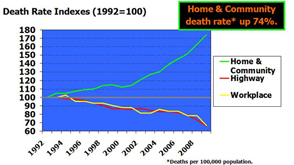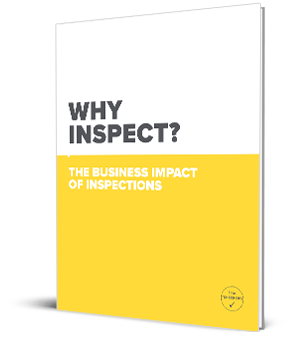Smart businesses invest the necessary money, put in the required time, and have a real commitment to make their workplaces as safe as possible.
But what happens when personnel go home? According to the National Safety Council (NSC), roughly three out of four injuries and nine out of 10 deaths occur off the job.
There’s certainly a difference between an on-the-job injury or fatality in terms of liability and workers comp premiums, but when a worker is injured and can’t work, a business is still going to suffer lost work time, replacement costs (recruiting, hiring, training, etc.), potentially higher group health insurance premiums, and, very likely, lowered productivity.
The NSC cites statistics from 2009, when employers lost 55 million lost workdays due to on-the-job injuries, an amount that pales compared to the 255 million lost workdays due to off-the-job injuries.
Therefore, the NSC correctly points out that smart businesses not only work to create safety awareness at work, they try to get everyone to take that awareness home with them.
Checklists are Part of Home Safety
The NSC offers Family Safety & Health Employer Resources that help employers encourage personnel (and their families) to eat healthier, drive safer, stop smoking, and get vaccinated.
As a company focused on helping businesses become safer by improving inspection processes, we can’t help but see how this effort to improve off-the-job safety can benefit from checklists, just as on-the-job safety can.
The checklists we provide businesses are professionally designed, available in print or mobile form. But checklists are universal—shopping lists are checklists, for example.
So, too, are checklists related to safety at home. Informal checklists can be used to make personnel safer away from work in many ways, including checklists for:
- Fire-prevention measures (checking smoke alarms, ensuring heavily combustible materials are stored away from the home, inspecting the fireplace chimney, inspecting furnaces, etc.)
- Healthy activities to do (a checklist for an exercise routine, for example).
- Dietary requirements (check off what you’re supposed to each day as you eat it).
- Leaving-home safety checks (security systems on, oven off, no other appliances running, etc.)
- Medicine to take and when.
- Potentially dangerous household equipment before using it (e.g., gas grills, riding lawnmowers.)
- Items necessary to be as safe as possible during dangerous activities (e.g., boating, hiking.)
- Getting ready for a potential natural disaster that is likely to knock out power, strand people at home, and threaten their safety (major winter storms, hurricanes, etc.)
Many safety steps that people take are simple and automatic, and don’t really require checklists. We just do them in our head. But let’s face it—memories are not reliable. For processes with more than just a few steps or items, checklists almost always help speed the process, while ensuring nothing is overlooked.
The same reasons that checklists help improve safety at work also apply at home.
Takeaway
Companies that consider off-the-job safety to be outside their purview should strongly reconsider that thinking. If your company does understand the relationship between the overall health of personnel and company performance, you can enhance your “24/7 safety” message by reminding them of the amazing utility of checklists.
Graphic courtesy of National Safety Council.










